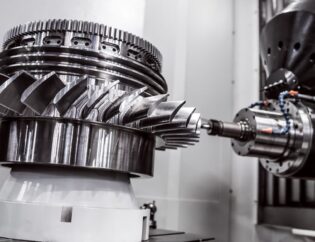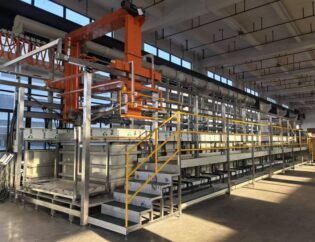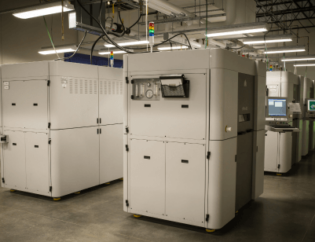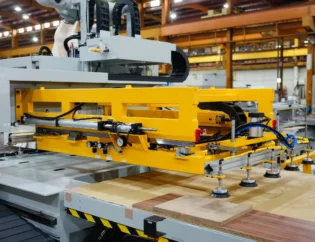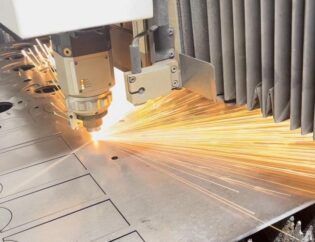Computer Numerical Control (CNC) has revolutionized the manufacturing industry, enabling precision and efficiency in machining processes. This guide delves into the intricacies of CNC technology, exploring its applications, benefits, and the underlying principles that drive it. Understanding CNC is essential for anyone involved in manufacturing, engineering, or design, as it enhances productivity and accuracy.
Readers can expect to learn about the various types of CNC machines, their components, and how they operate. We will also cover programming techniques, software tools, and best practices for optimizing CNC operations. By the end of this guide, you will have a comprehensive understanding of CNC systems and their impact on modern manufacturing.
Comprehensive Guide to Computer Numerical Control (CNC)
Introduction
Computer Numerical Control (CNC) is a modern manufacturing technology that utilizes computers to control the operation of machinery and tools in various industries. In CNC systems, computer programs and software are used to automate and precisely control the movement and operation of machines, such as lathes, mills, routers, and more. This automation allows for the creation of complex and accurate parts with high levels of repeatability and precision.
Technical Features of CNC
CNC technology has revolutionized manufacturing by providing numerous technical features that enhance productivity and precision. Below is a comparison table highlighting some of the key technical features of CNC systems:
| Feature | Description |
|---|---|
| Automation | CNC machines operate automatically, reducing the need for manual intervention. |
| Precision | High accuracy in machining parts, often within tolerances of 0.0001 inches. |
| Repeatability | Consistent production of identical parts, ensuring uniform quality. |
| Flexibility | Ability to switch between different tasks and designs with minimal downtime. |
| Complexity | Capable of producing intricate designs that are difficult to achieve manually. |
| Integration | Can be integrated with CAD/CAM software for streamlined design and production. |
| Remote Operation | Many CNC machines can be monitored and controlled remotely, enhancing efficiency. |
Types of CNC Systems
CNC systems can be categorized into different types based on their operational characteristics and applications. The following table outlines the primary types of CNC systems:
| Type | Description |
|---|---|
| Point-to-Point CNC | Moves the tool from one point to another without following a continuous path. |
| Continuous Path CNC | Allows the tool to move continuously along a defined path, enabling complex shapes. |
| 3D CNC | Capable of producing three-dimensional parts by controlling multiple axes simultaneously. |
| Laser CNC | Utilizes laser technology for cutting and engraving materials with high precision. |
| Plasma CNC | Employs plasma cutting technology for metal fabrication, ideal for thick materials. |
| Waterjet CNC | Uses high-pressure water jets to cut materials, suitable for a variety of substances. |
Insights into CNC Applications
CNC technology is widely used across various industries, including aerospace, automotive, electronics, and medical equipment. Each sector benefits from the precision and efficiency that CNC machines provide. For instance, in the aerospace industry, CNC is crucial for manufacturing components that require extreme accuracy, such as landing gear and airfoils. Similarly, in the automotive sector, CNC machines are employed to produce engine parts and chassis components.
The integration of CNC technology with CAD/CAM software has further enhanced its capabilities. This synergy allows for seamless transitions from design to production, minimizing errors and reducing lead times. Companies like www.ptc.com and www.cncsourced.com are at the forefront of providing solutions that optimize CNC operations.
Advantages of CNC Technology
The advantages of CNC technology are numerous and impactful. Some of the key benefits include:
– Cost Efficiency: CNC machines reduce production costs by minimizing waste and optimizing material usage.
– Enhanced Safety: With reduced human intervention, the risk of workplace accidents is significantly lowered.
– Increased Production Speed: CNC machines can operate continuously, leading to higher output rates.
– Customization: CNC technology allows for easy modifications to designs, enabling tailored production runs.
Challenges in CNC Manufacturing
Despite its advantages, CNC technology also faces challenges. The initial investment in CNC machinery can be substantial, and ongoing maintenance is required to ensure optimal performance. Additionally, skilled operators are necessary to program and manage CNC machines effectively. Companies must invest in training and development to maintain a skilled workforce.
Conclusion
Computer Numerical Control (CNC) technology has transformed the manufacturing landscape, offering unparalleled precision, efficiency, and flexibility. As industries continue to evolve, the role of CNC will only grow, driving innovation and productivity. Companies like www.techtarget.com and www.britannica.com provide valuable insights into the ongoing developments in CNC technology, ensuring that businesses stay informed and competitive.
FAQs
1. What is CNC technology?
CNC technology refers to the automated control of machining tools and 3D printers by means of a computer. It allows for precise and repeatable manufacturing processes.
2. How does CNC improve manufacturing efficiency?
CNC improves efficiency by automating processes, reducing manual labor, and enabling faster production times while maintaining high precision.
3. What industries use CNC technology?
CNC technology is used in various industries, including aerospace, automotive, electronics, and medical equipment, among others.
4. What are the main types of CNC machines?
The main types of CNC machines include point-to-point CNC, continuous path CNC, laser CNC, plasma CNC, and waterjet CNC.
5. How can I learn more about CNC technology?
You can explore resources from websites like www.engineeringtechnology.org, www.techtarget.com, and www.cncsourced.com for in-depth information and updates on CNC technology.





